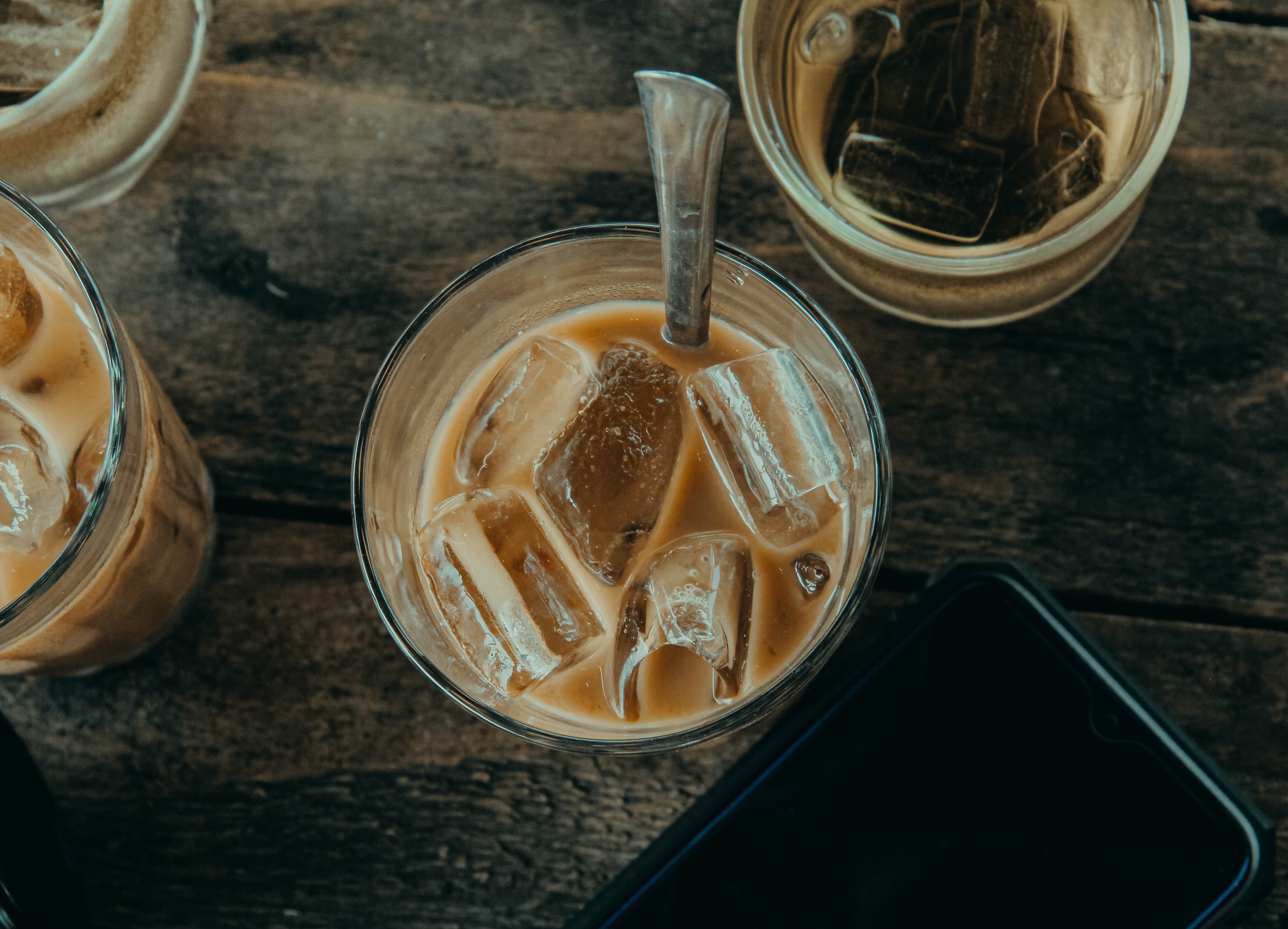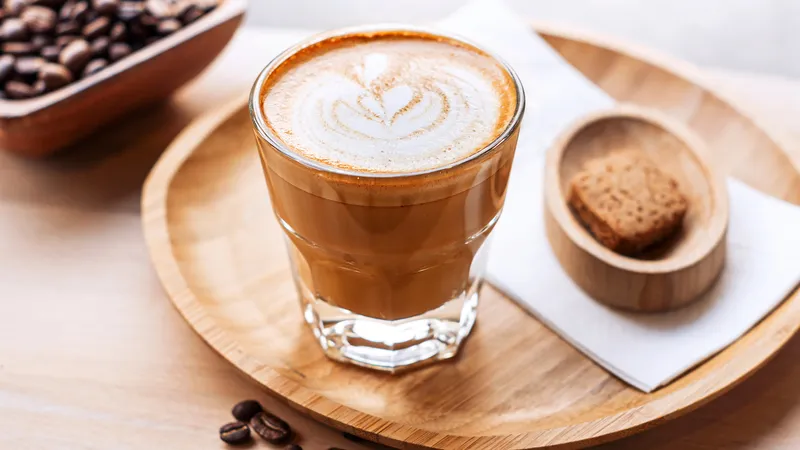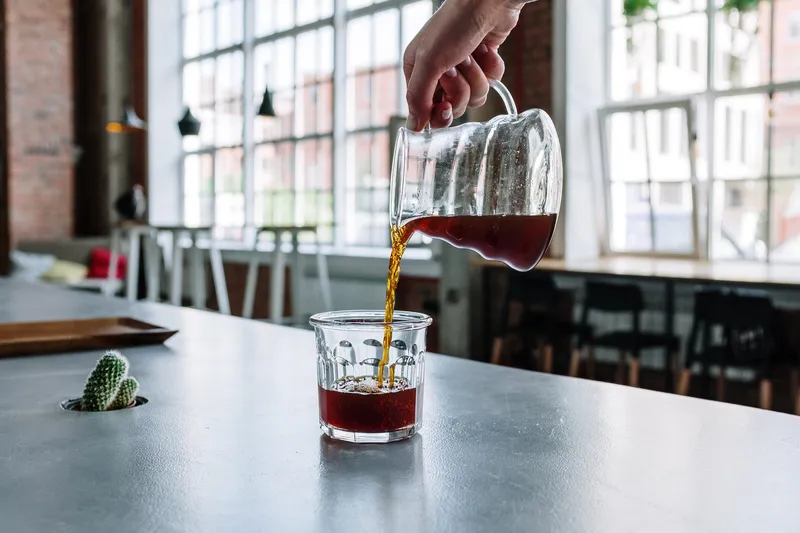Have you ever wondered how to make a delicious cold brew coffee at home? Look no further! In this comprehensive guide, we will explore the basics of cold brewing, the necessary equipment you will need, a step-by-step guide to making cold brews, and even some interesting variations to try. So grab your coffee beans and let's get started on this caffeine-filled adventure!
Understanding the Basics of Cold Brew
Coffee lovers around the world have embraced the unique and refreshing taste of cold brew. This brewing method has gained popularity for its smooth and less acidic flavour profile. But what exactly is cold brew and how does it differ from traditional hot coffee brewing methods?
What is Cold Brew?
Cold brew coffee is a brewing method that involves steeping coffee grounds in cold water for an extended period, usually between 12 to 24 hours. This slow and patient process allows the flavours and aromas of the coffee to be extracted gradually, resulting in a distinct taste that sets it apart from hot brewed coffee.
Unlike hot brewing methods that rely on heat to quickly extract the coffee's flavours, cold brew takes a more leisurely approach. The cold water gently coaxes out the oils and soluble compounds from the coffee grounds, resulting in a smoother and less acidic cup of joe.
One of the key benefits of cold brew is its versatility. It can be enjoyed as a refreshing iced coffee, or it can be heated up for a warm cup of comfort. The concentrated nature of cold brew also makes it an excellent base for creating various coffee beverages, such as lattes, mochas, and even cocktails.
The Science Behind Cold Brewing
Now that we have a basic understanding of what cold brew is, let's delve into the science behind this intriguing brewing method. During the cold brewing process, the water extracts the coffee's oils and soluble compounds, resulting in a distinct flavour profile.
The extended steeping time allows for the extraction of different compounds compared to hot brewing methods. The slow and gradual extraction process of cold brew produces a milder and less bitter coffee. This is because the lower temperature of the water prevents the release of certain acids and compounds that contribute to the bitterness often associated with hot brewed coffee.
Furthermore, the extended steeping time allows for a more comprehensive extraction of the coffee's flavours. This means that cold brew can bring out unique flavour notes that may not be as prominent in hot-brewed coffee. Coffee enthusiasts often describe cold brew as having a smoother, sweeter, and more nuanced taste.
Another interesting aspect of cold brew is its lower acidity. The extended steeping time and the absence of heat result in a coffee that is significantly less acidic compared to its hot brewed counterpart. This makes cold brew a great option for those with sensitive stomachs or acid reflux issues, as it is generally easier on the digestive system.
It's important to note that the brewing ratio of coffee to water plays a crucial role in the final taste of cold brew. Experimenting with different ratios can lead to variations in flavour intensity and strength. Some coffee enthusiasts prefer a stronger brew with a higher coffee-to-water ratio, while others enjoy a milder version with a lower ratio.
So, the next time you find yourself craving a cup of coffee, consider giving cold brew a try. Its unique brewing process and distinct flavour profile make it a delightful alternative to traditional hot-brewed coffee. Whether you enjoy it over ice or warm up, cold brew is sure to satisfy your coffee cravings in a whole new way.

Necessary Equipment for Cold Brewing
When it comes to making a delicious cold brew, selecting the right coffee beans is crucial. The flavour and quality of your cold brew will heavily depend on the type of beans you choose. So, let's dive into the world of coffee beans and explore the options available.
Choosing the Right Coffee Beans
There is a wide variety of coffee beans to choose from, each offering its unique flavour profile. For cold brewing, it is recommended to opt for a medium to coarse grind. This grind size allows for optimal extraction and ensures that your cold brew is smooth and flavorful.
When selecting coffee beans for your cold brew, consider experimenting with different single-origin beans or blends. Single-origin beans come from a specific region, offering distinct flavours that reflect the characteristics of that particular area. Blends, on the other hand, combine beans from different regions, resulting in a more complex flavour profile.
Some popular single-origin coffee beans for cold brewing include Ethiopian Yirgacheffe, known for its fruity and floral notes, and Colombian Supremo, which offers a balanced and smooth taste. If you prefer blends, you can try a combination of Brazilian Santos and Sumatran Mandheling, creating a rich and chocolatey flavour.
Grinders and Filters: What You Need
Once you have selected the perfect coffee beans, it's time to prepare them for brewing. Investing in a quality grinder can make a significant difference in the taste of your cold brew. Grinding your beans just before brewing ensures maximum freshness and flavour extraction.
There are various types of grinders available, including blade grinders and burr grinders. Burr grinders are generally recommended for cold brewing as they provide a more consistent grind size, resulting in a better extraction. They allow you to adjust the grind size according to your preference, ensuring that you achieve the desired flavour profile.
In addition to a grinder, using the right filter is essential for a smooth and sediment-free cold brew. Stainless steel filters or cheesecloths are commonly used to strain the cold brew and remove any unwanted sediment. These filters allow the liquid to pass through while retaining the coffee grounds, resulting in a clean and clear final product.
When using a stainless steel filter, make sure to choose one with a fine mesh to prevent any fine particles from passing through. Cheesecloths, on the other hand, offer a more traditional method of straining and can be easily washed and reused.
By investing in a quality grinder and using the appropriate filter, you can ensure that your cold brew is not only delicious but also free from any unwanted residue. These equipment choices play a significant role in enhancing the overall brewing experience and allowing you to enjoy a refreshing cup of cold brew coffee.

Step-by-Step Guide to Making Cold Brew
Are you tired of your regular hot cup of coffee? Looking for a refreshing and smooth alternative? Look no further than cold brew! Cold brew coffee is known for its rich and bold flavour, and it's incredibly easy to make at home. In this step-by-step guide, we'll walk you through the process of making your own delicious cold brew.
Preparing Your Coffee Beans
Before we begin, it's important to start with high-quality coffee beans. Choose a variety that you enjoy and that is suited for cold brewing. For the best results, opt for a medium to dark roast. Measure out 1 cup of coffee beans and grind them to a medium to coarse consistency. This grind size is ideal for a cold brew as it allows for a slower extraction process, resulting in a smoother and less acidic brew. Remember, freshly ground beans will give you a more flavorful cold brew, so try to grind them just before you're ready to start brewing.
The Brewing Process
Now that your coffee beans are ready, it's time to start the brewing process. Take a large jar or container and add the ground coffee. For a stronger brew, you can increase the amount of coffee, but keep in mind that it may also result in a more concentrated flavour. Add 4 cups of cold, filtered water to the container. It's important to use cold water as it helps to extract the coffee's flavours more slowly and gently. Give the mixture a gentle stir to ensure that all the coffee grounds are fully saturated. This will help to ensure an even extraction. Once everything is well combined, cover the container with a lid or plastic wrap.
Now comes the waiting game. Place the container in the refrigerator and let it steep for 12 to 24 hours. The longer you steep, the stronger and more concentrated the cold brew will be. If you prefer a milder flavour, aim for the shorter end of the steeping time. During this time, the water will slowly extract the flavours from the coffee grounds, resulting in a smooth and robust cold brew.
Straining and Storing Your Cold Brew
After the steeping time is complete, it's time to strain your cold brew. Grab a fine mesh filter or a piece of cheesecloth and place it over another container. Slowly pour the cold brew through the filter, allowing the liquid to separate from the ground. This step is crucial as it ensures that your cold brew is free from any unwanted sediment or grit. Take your time with this process to achieve a clean and smooth final product.
Once you've strained your cold brew, it's ready to be enjoyed! You can store it in the refrigerator for up to a week, allowing you to have a refreshing cup of cold brew whenever you desire. Serve it over ice, add a splash of milk or cream, or sweeten it with your favourite syrup. The possibilities are endless!
Now that you know the step-by-step process of making a cold brew, you can experiment with different coffee beans, ratios, and brewing times to find your perfect cup. So, grab your favourite coffee beans and get brewing!
Exploring Variations of Cold Brew
Experimenting with Different Coffee Beans
Now that you have mastered the art of making a classic cold brew, why not explore different coffee beans? Try experimenting with single-origin beans from different regions to discover unique flavour profiles. From fruity Ethiopian Yirgacheffe to chocolaty Colombian Supremo, the possibilities are endless.
Adding Flavors to Your Cold Brew
If you enjoy a little extra kick in your cold brew, try adding flavours like vanilla extract, cinnamon, or even a hint of almond. Simply stir in the desired flavours to your cold brew before serving for a delightful twist on the classic.
Cold Brew Cocktails for a Twist
Why limit yourself to just plain cold brew? Get creative and whip up some refreshing cold brew cocktails. Mix your cold brew with some vodka and simple syrup for an espresso martini or add a splash of cream and Irish whiskey for a delicious Irish cold brew.

Tips for Perfecting Your Cold Brew
Common Mistakes to Avoid
One common mistake is using too much or too little coffee grounds. Finding the perfect ratio is crucial for a flavorful cold brew. Additionally, avoid using tap water as it may contain impurities that can affect the taste. Stick to filtered water for the best results.
Enhancing the Taste of Your Cold Brew
If you find your cold brew lacking a bit of oomph, try experimenting with different brewing times. Steeping it for a shorter period may result in a milder flavour, while a longer steeping time can enhance the coffee's intensity. Don't be afraid to adjust and find your perfect brew.
Now that you have all the knowledge and know-how, it's time to embark on your cold brew adventure. Whether you prefer the classic cold brew or want to experiment with different flavours and variations, making a delicious cold brew coffee is within your reach. So grab your favourite coffee beans and start brewing! Cheers to a refreshing cup of cold brew!
Frequently Asked Questions (FAQs):
How long can I store cold brew coffee?
Cold brew can be stored in the refrigerator for up to a week.
Can I use regular ground coffee for cold brew?
While it's recommended to use coarse-ground coffee, you can experiment with different grinds to find your preferred taste.
What's the ideal coffee-to-water ratio for cold brew?
A common ratio is 1 cup of coffee to 4 cups of cold, filtered water, but feel free to adjust based on your taste preferences.
Can I make hot coffee from cold brew concentrate?
Yes, you can heat cold brew concentrate for a hot coffee.
Can I sweeten my cold brew with syrups or sugar?
Absolutely! Add your favourite syrups or sugar to sweeten your cold brew.
What is the best way to dilute cold brew concentrate for serving?
Mix cold brew concentrate with cold water or milk, adjusting to your preferred strength.





